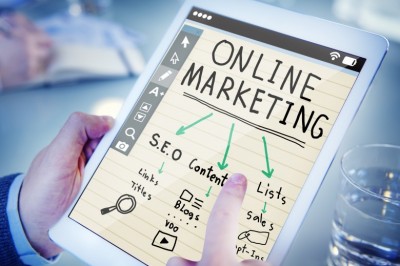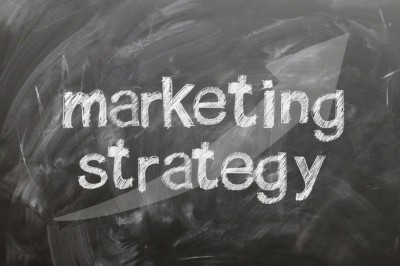Primary Research into a Sports Business Organisation
Introduction
With the current high competition being witnessed in all industries, companies are increasingly being faced with new challenges to come up with new marketing strategies that can ensure that they retain or even increase their market share. To achieve this, companies can undertake market research which is a process that involves gathering of information, recording and analyzing the data. This process involves gathering information concerning competitors and customers that exist in the market. Market research is very fundamental in monitoring the companies sales and product performance. It also helps organizations get vital information that helps in expansion to new markets. (Barney, 1991)
To address this subject, the study paper will carry on, along the following field: a sports company will be selected and analyzed for reasons of theoretical clarity; SWOT analysis will be used to analyze the company in details, and market strategies of the Nike company will be discussed at length; and lastly "the way forward" in terms of a conclusion will be provided
Company profile
Nike is an international company dealing with a range of sports equipment such as shoes, shirts, t-shirts and Jerseys for various sporting activities including, football, athletics, basketball, cricket, tennis, skateboarding and golf. Nike is a premium company that sells well branded and expensive products that are known for their superior quality. Nike is well known for the trademark "just do it" and it relates to the sporting spirit. This company has more than 500 factories in over 45 countries that are contracted to manufacture these products. With this extended production capacity, the company has elaborate marketing strategies that has made it possible for the company to realize its goals and objectives (Nike, 2008)
Company logo; source: http://www.nike.com/
Table 1: Summary of important aspects of Nike Incorporated, adapted from: Nike (2008)
Founded 1972
Key people Philip Knight, co-founder, chairman
Mark Parker, CEO and president
Industry Sports equipments, sportswear, apparel and accessories
Revenue US$16.326 Billion (2007 FY)
Net income US$1.492 Billion (2007)
Employees 30,200 (January, 2008)
Slogan Just Do It
Strengths
Nike Corporation is an extremely competitive company, as its market share can attest. Mr Phil Knight the Founder and Nike CEO is frequently quoted as stating that "Business is war without bullets." Nike Corporation has a strong dislike of its competitors. For example in the Atlanta Olympics, Nike declining sponsoring the games, Reebok went on and put in a lot of expenses in sponsoring the games. Nonetheless Nike did sponsor the best athletes and achieved expensive coverage. (The Washington Post, 2007)
Nike Corporation do not own factories, and thus it cash is not tied up in buildings or manufacturing employees. As a result Nike is an exceptionally lean organization. The company has a strong research and development strategy, as proved by its ever evolving and inventive product scope. The company has built a strong image of high quality products which are priced at the best price possible. In cases there is price increase, and the products can cheaply be made elsewhere (with similar or superior specification) then, Nike will shift its production centre to that location as its a global corporation.
Nike Corporation has a global brand image, and its the leading sports brand image global. Its renowned "Swoosh" is instantaneously recognisable. (The Washington Post, 2007)
Weaknesses
Though Nike has diversified the range products they manufacture, the revenue of the company still are heavily depends on its market share from footwear products. This might leave Nike susceptible if for some reason the companys market share of footwear is eroded. Nike also depends a lot on the retailer sector which is highly price sensitive. Even though, the company has its own retailer outlets known as Nike Town, it derives much revenue from outer retailers. Nonetheless a lot of this revenue from retailers is lower, since retailers seem to behave as consumers by offering minimum profit margin. The margins appear to get constricted because retailers attempt to pass a little of the low pricing competition pressure on the company. (Bakan, 2004)
Opportunities
The company has opportunities in Product development which provides Nike with many chances to exploit new products. Even though Nike brand is intensely defended by the company who really trust that Nike brand image is not a fashion image. It is clear that many consumers who purchase Nike products do not all the time purchase the products to take part in sports; many of them buy as a trend, especially the youths. Thus one can argue that is a fashion image in the youth culture. This builds its own opportunities for the company, given that a product might become unfashionable prior to it wearing out i.e. customers require to replace their shoes. (The Washington Post, 2007)
There also exists the opportunity in developing products like sunglasses and jewellery. These high value products seem to be connected with high profits compared to the company main line. (The Washington Post, 2007)
Nike can also develop its business along international market, building on its well-built global brand image recognition. Today, many international markets have the disposable earnings to expend on premium priced items and high priced sports products. For instance, emerging global markets like China, Hong Kong and India are having a new wealthier generation of buyers. In addition there is also coming global sports events like the Olympics games to be held in China and the European football championship where the company has a good market opportunity to support its global market. (The Washington Post, 2007)
Threats
As a global company Nike is duly exposed to international environment of trading. The company purchases and sells its products in diverse currencies and thus expenses and margins can not be steady over prolonged time. This exposure can imply the company could be manufacturing its products and/or selling them without making profit. This aspect faces all international brands.
More so sports shoes and wear market is very competitive. The business model formulated by Phil Knight (co-founder of Nike) in the earlier days (high quality product produced at a low-priced) is currently usually applied by Nike competitors and thus to some degree it is no more a foundation for prolonged competitive advantage strategy. In addition Competitors such as Reebok and Adidas are developing substitute brands to capture the companys market share locally and globally. (Egan, 2007)
As discussed earlier in weaknesses section, the retail segment is increasingly becoming more price competitive, this eventually implies that consumers are looking about for the best deal. Thus if one store is charging a certain price for a particular pair of sports shoe, the consumer might go to counter check the price of that particular pair of sports shoe in another store down the street and compare the prices, and purchase the store offering that pair cheaply. This kind of buyer price sensitivity definitely is a prospective external threat to the company. (Egan, 2007)
SWOT Analysis
Most companies, organizations and institutions today are using SWOT analysis as a strategic method/tool for evaluating their strengths, Weaknesses, Opportunities and Threats with reference to strategic planning. SWOT analysis identifies the internal and external factors that determine the achievements a company has specified in its goals and objectives. First, it specifies the internal factors i.e. strengths and weaknesses of Nike Company. Secondly, it categorizes the external factors that have been identified to boost or hinder the achievements of the company especially in terms of growth and expansion. These external factors are the opportunities and threats. (Anthony, 1998)
Strengths
Strength can be defined as a particular skill or distinctive competence that a company can do relatively better than other companies especially its competitors and which the organizations have and contributes to the achievements of the stated goals or objectives. (Proctor, 2000)
A weakness
A weakness can be defined as any aspect of the company which may hinder the company from attaining its objectives or goals. Usually, it covers the firms assets, resources, and capabilities
Opportunity
An opportunity in this aspect can be defined as any event, development, or a feature of the external environment which creates conditions that are favourable or advantageous to the business in relation to a particular objective or set of goals to be attained. It is an attractive venture for a companys operations which if exploited will lead to a significant upward change with desired results such as increase in profits margins and growth. (Michael, 1985)
A threat
A threat on the other hand is an environmental development or event which will present problems or challenges likely to hinder the achievement of organizational objectives, for example, competition, high interest rates, government legislations, declining real income among others. (Anthony, 1998)
SWOT analysis offers vital information which is helpful in relating the companys resources and ability in the competitive business environment in which a company operates. Thus SWOT analysis is suitable for environment analysis.
Marketing strategies of Nike
Nike has adopted marketing mix, which is marketing strategy employs the use of "4 Ps" that is product, promotion price and place. These four aspects are the ones which are used in many companies. Each aspect is important and plays a big role in marketing processes. Marketing is a wide are in the company and Nike has managed to take full advantage of it in as a world number one company in sports wear (Hampy 2006).
Product
This is an object or service that a company produces or manufactures particularly on large scale with precise amounts (Bakan, 2004). Nike has a large collection of products that it sells to the market, this include shoes, clothes and apparel used for sporting activities. The products cater for different sports like basketball, road running, tennis, soccer, athletics and many more others. Nike products are meant for men, women and children. The company is renowned for its hip hop culture and supplies urban fashions in terms of clothes. In order to improve its products quality, Nike together with Apple Inc. produced the Nike+ line of products that are able to monitor how a runner is performing through a radio device that is place in the shoes which is then linked to the iPod nano. In doing this Nike is able to market its products and retain its market share (Hampy 2006).
The products produced by Nike are different as mentioned above. At first, it was just produced shoes alone, but, as technology changed and demand increased, then it was practical for it to expand to other products (Hampy 2006). The characteristics of the companys products are well defined to meet the needs of the consumers; the packaging of the product is considered attractive to entice the customers to buy the products. Nike believes the quality of their products is perfect, that is, it is the quality that matches with the prescription of the product in the market so that it can maintain its consumers who are not misled with the misrepresentation of the qualities with its competitors such as Reebok and others (Hampy 2006).
Nike pair of athletic shoes
Promotion
Promotion includes all communications that a company uses in marketing its products. We have four different elements in promotion; this includes advertising, point of sale, word of mouth and public relations (Brown 1993). If a company incorporates all the four elements then a certain level of crossover do occur. Nike has greatly used this marketing mix to its full advantage. It has incorporated all the four aspects of promotion which as seen the company capture and retain a big share of the market.
As discussed earlier, Nike has entered in sponsorship deals with various celebrity sports personalities and professional teams who are used to bring attention to Nike products. The company has sponsorships agreements with Ronaldhno, Christiano Ronald and Wayne Rooney, in football. In basketball the company has Kobe Bryant and Vince Carter, while it has Lance Armstrong in cycling. In golfer the company has a sponsorship deal with Tiger Woods, while in tennis it has Roger Federer. All this sports personalities and many other are used to market the company products (Hampy 2006). This method of marketing has been very successful to the company has many customers want to be identified by their favourites sports personalities hence buying the companys products. The company has several adverts that appear in the media and on the internet that are used to advertiser the company products. It should be noted that advertisement is a very powerful marketing tool that is used to create more market for the company.
Price
The amount that a customer pays for a certain product is its price. This amount is determined by various factors which includes product identity, competition, market share and the perceived worth of the product by the customer (Doyle 2000). Nike has focused on producing quality products at a premium price. Though, products from the company seem to be having a higher price, this is because the quality of the products is normally high. Premium pricing from the company is also a marketing strategy that is working. Nike has adopted on the following pricing methods to enable product reach its marketing standards. Premium pricing is where the uniqueness of the company product is defined such as a fixed price. For Nike to be able to gain the market share, it begun with the application of the penetration pricing whereby, once the company achieved the market share, it increased the price of its product (Hampy 2006).
Place
This stands for, location where the products from a company are found and purchased. This in many cases refers to distribution channels of the company which can be physical stores or even virtual stores found on the internet (Doyle 2000). Nike Company has managed to create a lot of distribution channels that has ensured that its products reach a wide market. Nike has built a large network of selling its products; this has ensured that customers are able to easily get products from the company. The company has independent distributors, subsidiaries and licensees in other countries who sell the company products. In the United States Nike have many outlets to sell its products. Nike channels of distribution are considered to be the best and have played an important role increase of revenue. For example, the "NIKE Towns" which are located in all major cities in America. Nike either uses the direct or the indirect channels that is, supplying to the consumers directly or through wholesalers (Hampy 2006).
Nikes competitive advantage
The company has a competitive advantage in the sports wear market over its main rivals in the industry (Hampy 2006). This is because the marketing of Nike has been efficient and effective in their jobs by practicing good measures that includes; frequent monitoring of other competitors products, constant improvement of its products quality to meet the ever increasing market demands, provision of social support and community projects such as providing scholarships to needy students and sponsoring sports events in various parts of the world and employing sound financial management techniques as well as constant evaluation and control measures of the company.
Chart 1: The chart below shows Nike Companys stock growth in percentage compared to is competitors and also the S& P500 index; source http://blogs.indews.com/cgi-bin/bg/mt-tb.cgi/13
Conclusion
An analysis of a companys internal and external environment remains an important aspect of a companys strategic planning process. With cut-throat competition being observed in the markets, a company has to come up with strategies that can make it maintain its market share. As Kotler, Philip, Keller and Lane (2005) observes, todays business world is very competitive. Nike is reasonably very capable in most aspects of its business. Nike has been able to get and stay at the top through good marketing mix and product mix.
Reference:
Anthony C. (1998): SWOT Analysis; An explanation of the S.W.O.T. Analysis process; New York; Macmillan Press
Barney, J. B. (1991): Firm Resources and Sustained Competitive Advantage, Journal of Management, 1 (January),
Bakan, J (2004): The Corporation: The Pathological Pursuit of Profit and Power. London: Constable
Brassington, F. and Pettitt, S. (2000): Principles of Marketing, 2nd edition: New York, Prentice Hall, Harlow
Doyle, P. (2000) Value based marketing, Wiley, Chichester
Egan, T, E (2007): "The swoon of the swoosh", New York Times Magazine; September
Hampy, J. (2006): Reengineering the Nike Corporation: A Manifesto for Business marketing in Nike, Harper Business Books; New York.
Nike (2008) about us; Website: http://www.nike.com/
Nike Financial Analysis (2006): available online from: http://blogs.indews.com/cgi-bin/bg/mt-tb.cgi/13 accessed on 27/2/2008
Mark, D. (2001): Principles and Practice of Marketing; 3rd Edition of Chartered Institute of Marketing, Washington, U.S
Michael J. B (1985): Marketing strategy and management, Macmillan publishers Ltd, London
Proctor, T. (2000): Essentials of Marketing Research: London, Financial Times-Prentice Hall
Kilter, P (1996): Principles of Marketing: Stages of customer relationships. 4th European Edition Prentice Hall Harlow (UK)
Kotler, Philip, Keller and Lane (2005): Marketing Management, Prentice Hall
The Concept of the Marketing Mix (1964): The Journal of Advertising Research.
The Customer Driven Company (2000): Moving From Talk to Action R.C. Whiteley, Pfeiffer & Company,
The Washington Post, Retrieved March 7, 2007
Swarming the shelves; (2000); how shops can exploit peoples head mentality to increase sales; The Economist.
Wiley, J (2005): Passionate & Profitable: Why Customer Strategies Fail and 10 Steps to Do Them Right!, Lior Arussy.


























